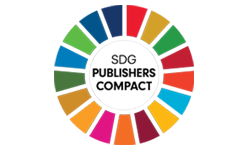In light of a conspicuous strength in China’s solar industry in recent years this paper analyzes an institutional source of its strength. Empirical analysis was conducted focusing on the interaction between indigenous semiconductor industry (“East”) and newly emerging solar industry in absorption of global best practices (“West”) thereby fusion between them was demonstrated. Success of this fusion can be attributed to a joint work between industry’s intensive effort in learning global best practices for exploring new business and government’s catalytic role for the attainment of decarbonisation society for nation’s sustainability. This suggests a new insight for growing economy for its development of global competitive industry.
Anon, A. (1998) ‘Analytical report on technology, productivity and job creation – Best policy practices’, OECD, Paris, 1998.
Anselin, L., Varga, A., and Zoltan A. (2000) Geographical Spillovers and University Research: A Spatial Econometric Perspective, Growth, and Change, Volume 31, Issue 4, pages 501–515, Fall 2000.
Arnaud T., Glachant, M., and Meniere, Y. (2011) ‘Innovation and international technology transfer: the case of Chinese photovoltaic industry’, Energy policy (2011) 761-770. http://dx.doi.org/10.1016/j.enpol.2010.10.050.
Arrow K.J. (1962) ‘Economic Welfare and the Allocation of Resources for Innovation’, in: The Rate and Direction of Technical Change, R. Nelson, (Ed.), New York, National Bureau of Economic Research, 1962.
Balzat, M., and Hanusch, H. (2004) ‘Recent trends in the research on national innovation systems’, Journal of evolutionary economics, 14, 2004, pp. 197-210. http://dx.doi.org/10.1007/s00191-004-0187-y.
Bin, X. (2007) ‘Trade, foreign direct investment and productivity of China’s private enterprises’ in Eds. Shuanglin L., and Xiaodong Z. ‘Private enterprises and China’s economic development’, Routledge, London, 2007, pp. 159-172.
Blake, A., Zileng, D., and Falney, R.(2009) ‘How does the productivity of foreign direct investment spill over to local firms in Chinese manufacturing’, Journal of Chinese economic and business studies, vol. 7, no.2, May 2009, pp. 183-199.
Branstetter, L.,(1998) ‘Looking for International Knowledge Spillovers: A Review of the Literature with Suggestions for New Approaches’, Annales d’Economie et de Statistique No. 49/50, 1998, pp. 517-540.
Brinser, G., Hart, M., Mehta, S., Shah, J., and Wanless, R. (2012) ‘China Solar Industry and the US antidumping – anti-subsidy trade case’, A Kearny alliance project, China GlobalTrade.com, May 2012.
Chetan, S. Solar photovoltaics: Fundamentals, technologies, and applications, PHI publications, New Delhi, 2009.
Fosfuri, A., Motta, M., and Ronde, T. (2001), “Foreign direct investment and spillovers through workers’ mobility”, Journal of International Economics, 53, pp. 205-222. http://dx.doi.org/10.1016/S0022-1996(00)00069-6.
Goodrich, A., Ted J., and Woodhouse, M. (2011)‘Solar PV manufacturing cost analysis: UZS competitiveness in a global industry’, Stanford University, Oct 10th, 2011, NREL/PR6A20-53938, pp. 1-45.
Griliches, Z. (1998) ‘R&D and productivity: the econometric evidence’, Scandinavian Journal of Economics The University of Chicago, IL, 1998, pp. 251-268.
Griffith, R., and Reenan V.(2003)‘R&D and absorptive capacity: Theory and empirical evidence’, Scandinavian Journal of Economics, vol. 105:1, 2003, pp. 99-118.
Griffith, R., and Reenan V. (2004)‘Mapping the two faces of R&D: productivity growth in a panel of OECD industries’, Review of Economics and Statistics, 86, 883-95.
Grossman G., and Helpman, M.(1991)‘Trade, knowledge spillovers and growth’, European Economic Review, 35:2-3, 1991, pp. 517-526. http://dx.doi.org/10.3386/w3485.
Hart M. (2011) ‘Shining a light on US-China energy cooperation, Center for American Progress’, Feb 2011.
Jaffe, A. (1986) ‘Technological opportunity and spillovers of R&D: evidence from firms’ patents, profits, and market value’, 76:5, 1986, pp. 984-1001.
Jaffe, A., Trajtenberg, M., and Henderson, R. (1993)‘Geographic localization of knowledge spillovers as evidenced by patent citations’, Quarterly Journal of Economics, 108:3, 1993,pp. 577-598.
Kan, S. (2010)‘Chinese photovoltaic market and industry outlook – part 1’, IEEJ, April 2010,pp. 1-12.
Keith, B.(2011)‘Trade war in solar takes shape’, New York Times, 11thNov. 2011.
Kevin, B.(2012)‘The Chinese Solar Machine’, Jan. 2012, http://www.technologyreview.com/energy/39356/
Kinoshita, Y. (2001)‘R&D and Technology Spillovers through FDI: Innovation and Absorptive Capacity’. CEPR Discussion Paper no. 2775. London, Centre for Economic Policy Research. http://www.cepr.org/pubs/dps/DP2775.asp.
Liu, X., Parkar, D., Vaidya, K., and Wei, Y. (2001) ‘The impact of foreign direct investment on labour productivity in the Chinese electronics industry’, International business review, 10 (2001) 421-439. http://dx.doi.org/10.1016/S0969-5931(01)00024-5.
Maskus, K. E. (2004)‘Encouraging Technology Transfer,” report for UNCTAD/ICTSD, Project on Intellectual Property Rights and Sustainable Development’, Issue Paper no. 7, 2004.
Mark, N.(2011) ‘Economic impact of the photovoltaic industry in China after the financial crisis of 2009’, The Chinese economy, 44:3, 2011, pp. 22-44.
Miller, M., and Upadhay, V. (2000) ‘The effects of openness, trade orientation, and human capital on total factor productivity’, Journal of development economics, 63, pp. 399-423.
Nelson, R. (1959) ‘The Simple Economics of Basic Research’, Journal of Political Economy, 67, pp. 297-306.
Tilman, A., Schmitz, H., Stamm, A. ‘Breakthrough? China’s and India’s Transition from Production to Innovation’, World Development, 36:2, 2008, pp. 325-344. http://dx.doi.org/10.1016/j.worlddev.2007.06.011.
Watanabe, C., Wakabayashi, K., and Miyazawa, T. (2000) ‘Industrial dynamism and the creation of a virtuous cycle between R&D, market growth and price reduction’, Technovation 20, no. 6, (2000) pp. 299-312. http://dx.doi.org/10.1016/S0166-4972(99)00146-7.
Watanabe, C., Takayama, M., Nagamatsu, A, Tagami, T., andBrown, C.C. (2002) ‘Technology spillover as a complement for high-level R&D intensity in the pharmaceutical industry’, Technovation 22 (2002) 245-258.
Wiser, H., and Wingate, M. (2002)‘Renewable energy options for China: a comparison of renewable portfolio standards, feed-in tariffs, and tendering policies’, Center for resource solutions, 2002.
Yang, M., and Pan, R.F. (2010) ‘Harvesting sunlight: solar photovoltaic industry in China’, East Asian Institute, NUS, 2010.
Yang, M., and Pan, R. (2011) ‘Harvesting Sunlight: Solar Photovoltaic Industry in China’. China’s Industrial Development In The 21st Century, East Asian Institute, National University of Singapore, 2011, pp. 171-197.
Zhang, D., Chai, Q., Zhang, X., He, J., Yue, L., Dong, X. and Wu, S. (2012) ‘Economic assessment of large scale photovoltaic power development in China’, Energy, 40 (2012) 370-375. http://dx.doi.org/10.1016/j.energy.2012.01.053.
Zhen, Y.Z., Zhang, S.Y., and Zuo, J. (2011) ‘A critical analysis of the photovoltaic power industry in China – from diamond model to gear model’, Renewable and sustainable energy reviews, 15 (2011) 4673- 4971. http://dx.doi.org/10.1016/j.rser.2011.07.057.


